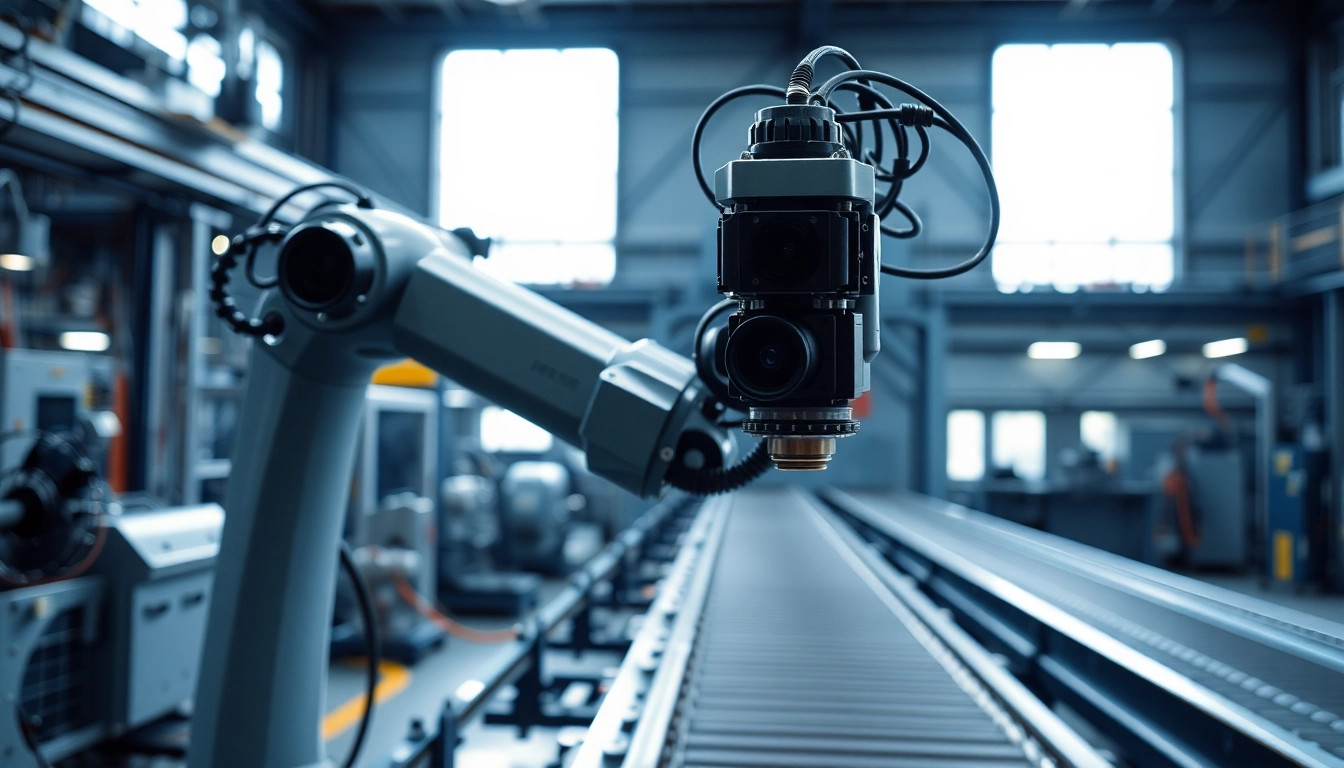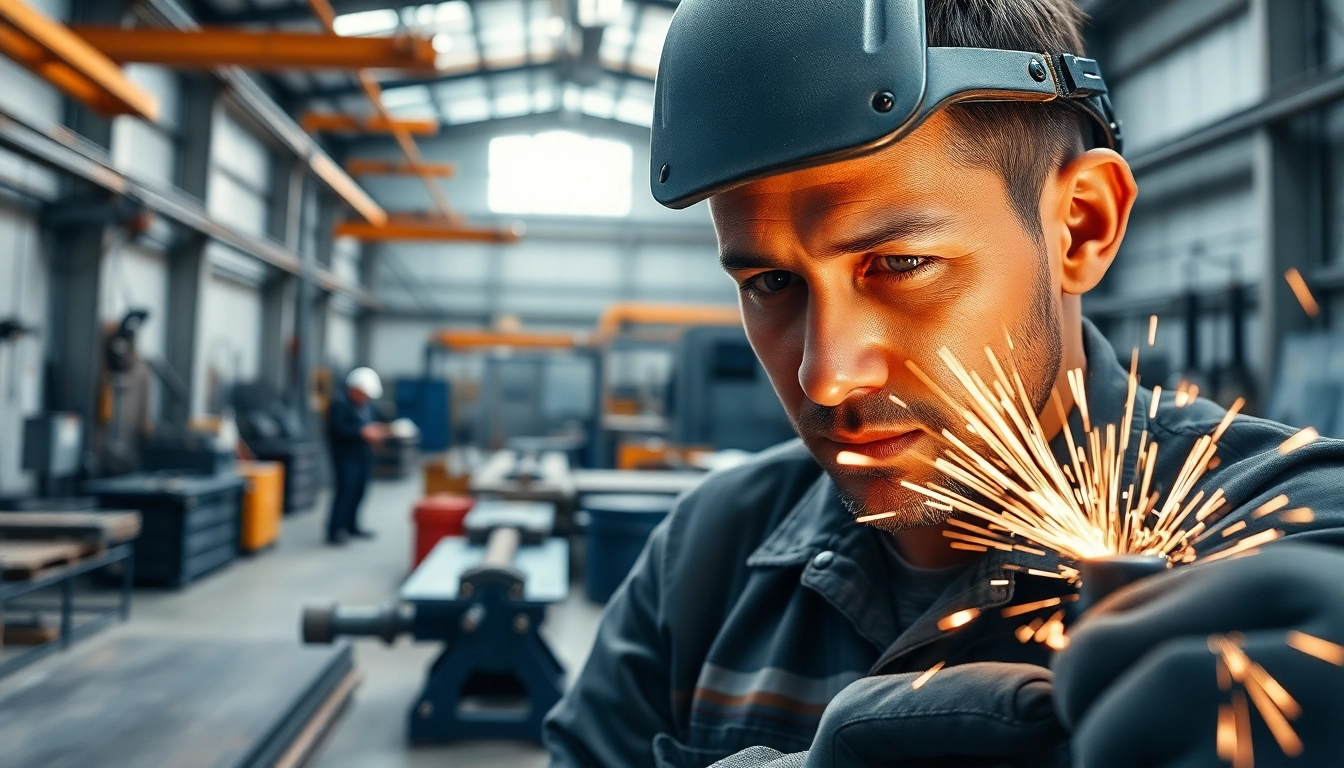What is Machine Vision? An Overview
Machine vision is an innovative technology that empowers machines and computer systems to interpret visual information from the world around them. This process is analogous to human vision but uses cameras and software to capture, analyze, and act upon images. By implementing advanced image processing algorithms, machine vision systems enable various applications ranging from quality control in manufacturing to complex automated tasks that require visual guidance. This technology is increasingly vital in today’s digital landscape, where efficiency and accuracy are paramount. For an in-depth understanding of machine vision, let’s explore its core components, applications, and benefits.
Definition and Key Components
At its core, machine vision refers to the ability of a system to observe and interpret visual data. Beyond basic functionalities, it encompasses a suite of technologies, including sensors, cameras, illumination, and integrated software that processes the acquired images. Key components of a machine vision system include:
- Cameras: These devices capture images of the work environment. The choice of camera—whether 2D or 3D—depends on the application needs.
- Lighting: Proper illumination is crucial as it enhances image clarity and quality. Different lighting solutions (e.g., backlighting, diffuse lighting) are employed based on the required visual effect.
- Processing Hardware: This component could range from simple processors to advanced graphics processing units that handle complex calculations required for image analysis.
- Software Algorithms: Specialized software is necessary for image processing, defect detection, measurement, and pattern recognition. These algorithms help interpret the visual data and drive actionable insights.
The Role of Cameras and Sensors
Cameras are the “eyes” of a machine vision system and play a pivotal role in its effectiveness. They not only capture images but also convert them into digital formats that software can process. The choice of camera technology—such as CCD (Charge-Coupled Device) or CMOS (Complementary Metal-Oxide-Semiconductor)—affects factors like frame rates, image resolution, and low-light performance. Sensors also contribute by detecting variations in the environment and aiding in real-time image modulation.
Machine Vision vs. Computer Vision
While often used interchangeably, machine vision and computer vision differ in terms of their focus and applications. Machine vision generally pertains to industrial applications that automate and control tasks such as inspection, measurement, and guidance. In contrast, computer vision is broader, involving the analysis of images to enable machines to understand and interpret visual data, potentially across various sectors beyond manufacturing, including healthcare and autonomous vehicles. Understanding these distinctions is essential for selecting the appropriate technology for specific applications.
Applications of Machine Vision in Industry
Machine vision has found widespread adoption across various industries. Its ability to enhance quality control, streamline automation, and improve operational efficiency makes it invaluable. Here are some prominent applications:
Quality Control and Inspection
One of the primary applications of machine vision is quality control. Automated inspection systems can detect product defects that human inspectors might miss, ensuring that only high-quality products reach consumers. For example, in the automotive industry, machine vision systems inspect welds and assembly quality, significantly reducing the likelihood of faulty parts. Moreover, these systems can work at high speeds, ensuring that the quality check doesn’t slow down production lines.
Automation in Manufacturing Processes
Machine vision contributes profoundly to automation in manufacturing. In the assembly process, vision systems can guide robots to place components accurately. For instance, in electronics manufacturing, a vision system can verify the correct placement of components on circuit boards, reducing errors that could lead to costly rework. Furthermore, machine vision systems can communicate with other factory equipment to optimize operations and enhance overall efficiency.
Vision Systems in Robotics
In robotics, machine vision equips robots with the ability to perceive their environment, allowing them to navigate and interact with objects autonomously. This is particularly beneficial in warehousing and logistics, where robots can identify and pick products from shelves accurately. Additionally, machine vision aids in self-driving technologies by enabling vehicles to recognize obstacles, read traffic signs, and make real-time driving decisions based on visual cues.
Benefits of Implementing Machine Vision
Implementing machine vision systems offers numerous advantages, which translate to tangible benefits for businesses. Here’s a closer look at some of the key benefits:
Improved Accuracy and Efficiency
Machine vision enhances operational accuracy and efficiency significantly. By automating visual inspections, manufacturers reduce human errors and increase throughput. For example, machine vision systems can operate continuously without fatigue, maintaining consistent accuracy in tasks such as barcode reading or flaw detection.
Cost Reduction Strategies
Investing in machine vision can yield substantial cost savings over time. Reduced labor costs, minimized product defects, and decreased downtime all contribute to a more cost-effective manufacturing process. For instance, a machine vision system that identifies defective products before they proceed to packaging can save manufacturers the expense of handling returns and dissatisfied customers, ultimately leading to higher profitability.
Real-Time Data Processing Capabilities
Real-time data processing is another significant advantage of machine vision systems. They can analyze visual data on-the-fly, enabling immediate reaction to abnormalities. This capability is especially critical in dynamic environments where quick decision-making is essential, such as production lines that require constant monitoring and adaptation to ensure optimal performance.
Common Challenges with Machine Vision Systems
Despite the numerous benefits, deploying machine vision systems does come with its challenges. Understanding these hurdles can help organizations prepare and implement effective solutions:
Understanding Environmental Influences
Environmental factors, such as lighting conditions, dust, and vibrations, play a crucial role in the performance of machine vision systems. To mitigate these influences, manufacturers must invest in appropriate lighting solutions, choose robust camera enclosures, and utilize image preprocessing algorithms to ensure consistent image quality across various operating conditions.
Algorithm and Software Limitations
Machine vision relies heavily on algorithms for analysis, and these algorithms may have limitations based on their design or the data they are trained on. Ensuring that algorithms are regularly updated and optimized is crucial. Businesses should also consider incorporating AI-driven technologies like machine learning, which can enhance the adaptability and accuracy of vision systems over time.
Integration with Existing Systems
Integrating machine vision systems with existing machinery or manufacturing processes can pose challenges. Successful integration requires careful planning, software compatibility checks, and skilled personnel to manage the transition. Working with experienced vendors who offer customized solutions can ease this process and ensure a smoother implementation.
The Future of Machine Vision Technologies
Looking ahead, machine vision technologies are poised for rapid growth and transformation. As advancements in AI and deep learning progress, the capabilities of machine vision systems will expand, providing even more innovative solutions for industries.
Trends in Artificial Intelligence Integration
AI integration into machine vision is becoming increasingly prevalent. By combining machine vision with AI, businesses can analyze vast datasets to extract patterns and insights that were previously unattainable. This combination enhances predictive maintenance, quality prediction, and real-time decision-making processes, ultimately driving smarter operations.
Emerging Market Opportunities
The burgeoning demand for automation in various sectors—such as healthcare, agriculture, and security—presents significant opportunities for machine vision technologies. Companies that adapt to these trends and offer tailored solutions will likely lead the market. For instance, in healthcare, vision technologies can assist in surgical procedures and diagnostics by automating image analysis and interpretation.
Case Studies of Successful Implementations
Real-world examples further illustrate the successful integration of machine vision technologies. For example, a leading automotive manufacturer implemented a machine vision system for quality testing. They reported a 30% decrease in defects in the production line, demonstrating the immediate impact of machine vision on operational efficiency and accuracy. Similarly, companies in the pharmaceutical sector are using machine vision for pill identification and packaging checks, enhancing compliance and reducing waste.



